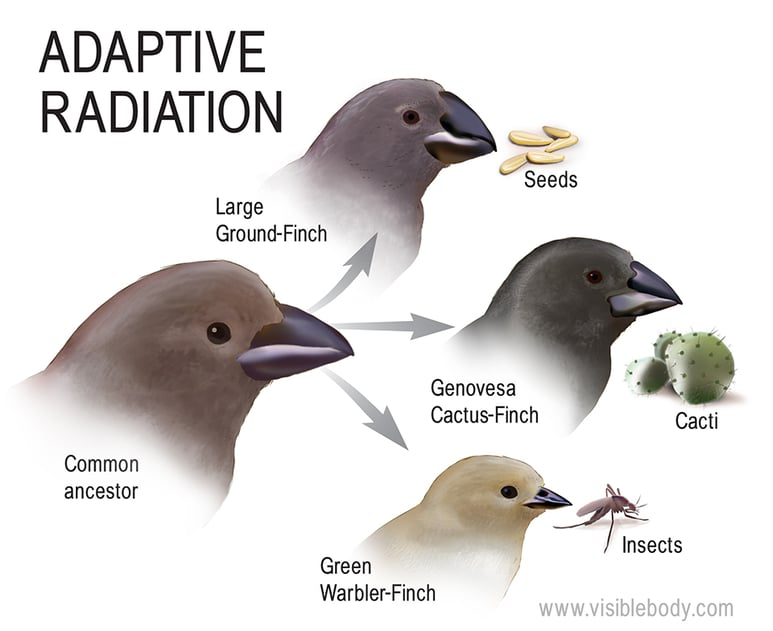Genetic adaptation in house finches is an intriguing example of how small changes in DNA can lead to significant evolutionary advantages. A recent groundbreaking pangenomic study has revealed a notable DNA inversion in house finches that may enhance their resistance to certain diseases. This innovative research, led by Bohao Fang, employed advanced sequencing techniques to provide a clearer picture of how these backyard birds adapt to environmental challenges. By analyzing genomic data over time, scientists have begun to unravel the heritable mechanisms behind disease resistance in birds, building a bridge between genetics and evolutionary adaptation. Ultimately, findings like these offer valuable insights not only into the evolution of house finches but also into broader themes of disease resilience across species.
The genetic modifications witnessed in house finches showcase a fascinating process of evolutionary change that is vital for survival. These alterations in the avian genome, specifically a transformative DNA inversion, exemplify how local species can develop defenses against prevalent infections. This extensive house finch research aims to illuminate the intricate relationships between genetic variation and resistance to pathogens. Furthermore, the methodologies employed in these investigations set a precedent for future studies in the realm of pangenomics, enhancing our comprehension of broader evolutionary patterns. By examining these genetic adaptations, we gain a deeper appreciation for the resilience of wildlife in the face of changing ecological dynamics.
Understanding Genetic Adaptation through House Finches
Genetic adaptation is an essential mechanism through which species evolve in response to changing environments. In the case of house finches, recent research has illuminated how these birds have undergone significant evolutionary changes to survive and thrive in a variety of habitats. The groundbreaking pangenomic study led by Bohao Fang reveals that a DNA inversion has enabled house finches to develop resistance against certain diseases, showcasing the power of genetic adaptation in real-time. As researchers delve deeper into the house finch’s genomic data, they are starting to understand how these adaptations help the species navigate challenges posed by pathogens like the bacterium responsible for conjunctivitis.
This shift in the understanding of evolutionary adaptation highlights the potential implications for broader avian health and disease management. By studying the house finch, scientists can gain insights into the genetic mechanisms that underlie disease resistance in birds. This knowledge is particularly pertinent in an era where emerging diseases pose significant threats to wildlife and human populations alike. Furthermore, understanding genetic adaptation in house finches may reveal pathways to explore how other species—and potentially humans—might successfully adapt to novel infectious threats.
Frequently Asked Questions
What role does DNA inversion play in genetic adaptation in house finches?
DNA inversion is a significant mechanism underlying genetic adaptation in house finches. Recent research indicates that a specific DNA inversion may have enabled these birds to develop resistance to certain diseases. This structural variation highlights how house finches adapt evolutionarily to environmental pressures such as pathogens.
How does house finch research contribute to our understanding of evolutionary adaptation?
House finch research offers valuable insights into evolutionary adaptation by examining how genetic variations, including large-scale structural changes like DNA inversions, affect disease resistance. The extensive genetic data from house finches reveals patterns of adaptation that enhance our understanding of how species evolve in response to health threats.
What are the implications of a pangenomic study on our knowledge of genetic adaptation in house finches?
A pangenomic study of house finches reveals a comprehensive view of genetic adaptations by analyzing the genomes of multiple individuals. This approach identifies crucial structural variations, such as DNA inversions, that play a pivotal role in the birds’ resistance to diseases, thus enhancing our understanding of evolutionary biology.
How has house finch genetic adaptation been observed in response to disease resistance?
Genetic adaptation in house finches has been prominently observed through their response to a bacterial pathogen causing conjunctivitis. The investigation into their DNA has uncovered significant adaptations, indicating how the birds have evolved mechanisms to resist diseases over time.
What does the study of house finches reveal about disease resistance in birds?
The study of house finches reveals important aspects of disease resistance in birds by highlighting genetic adaptations that occur naturally. Research indicates that structural variants within their DNA assist these birds in combating diseases, providing insights applicable to understanding resistance mechanisms in various avian species.
Why are house finches considered an excellent model for studying co-evolution between a host and disease?
House finches are considered an excellent model for studying co-evolution because they have shown clear adaptive responses to diseases such as those causing conjunctivitis. Their genetic adaptations, including notable DNA inversions, help researchers understand the dynamic interaction between hosts and pathogens in natural settings.
| Key Points | Details |
|---|---|
| Pangenomic Study | A new approach utilizing advanced sequencing techniques to explore genetic adaptations. |
| DNA Inversion | A significant structural change in the house finch’s DNA that contributes to disease resistance. |
| Evolutionary Response | The study sheds light on how evolution can adapt to diseases without vaccines, illustrated by the house finch’s resistance to pathogens. |
| Importance of Dataset | Using preserved DNA samples from 2000 provided critical insights into how house finches evolved. |
| Future of Research | The methodologies applied broaden the understanding of genetic diversity and adaptations in natural populations, benefiting various fields of study. |
Summary
Genetic adaptation in house finches has become a significant focus of research, highlighting how evolutionary pressures can lead to resilience against diseases. The groundbreaking findings from the recent pangenomic study reveal that a major DNA inversion has provided these small birds with resistance to specific pathogens, demonstrating the impact of such genetic adaptations. This research not only enhances our understanding of the house finch’s evolutionary history but also paves the way for future studies on genetic responses to diseases in other species, including humans. With the newly acquired insights into the role of structural variants in adaptive evolution, scientists can better comprehend the mechanisms behind disease resistance across different populations.
